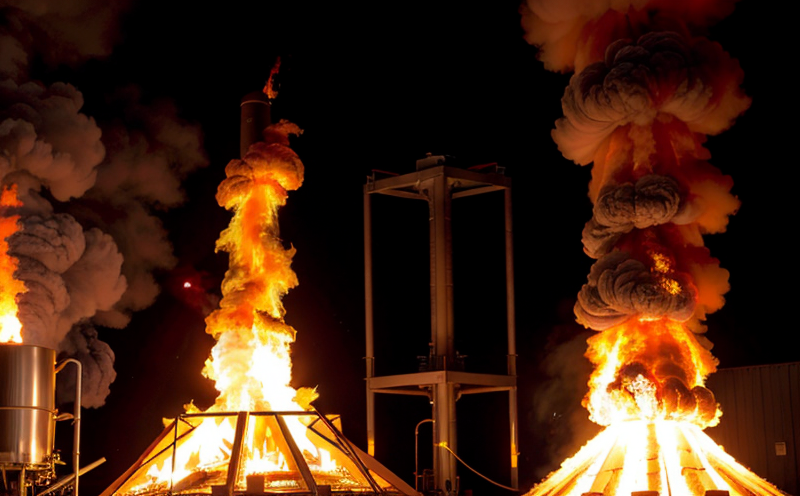Stack Emission Flammability Testing
In industries where flammable gases and vapors are generated during production processes, ensuring safe handling is paramount. Stack emission flammability testing plays a critical role in assessing the potential for combustion from emissions released into the atmosphere through stacks or chimneys.
This service involves the analysis of gas samples collected directly from stack emissions to determine their lower explosive limit (LEL) and upper explosive limit (UEL). These limits define the concentration range within which an air-fuel mixture is flammable, and thus, potentially dangerous. By conducting this testing, facilities can identify any potential risks associated with stack emissions and implement necessary safety measures.
The process typically starts with the collection of a representative sample from the stack using specialized sampling equipment. The collected gas or vapor is then analyzed in our laboratory under controlled conditions to ensure accurate results. Our team uses state-of-the-art analytical instruments, including chromatographs and infrared detectors, which are calibrated according to international standards such as ISO 17820:2015.
The testing process adheres strictly to industry best practices outlined in documents like EN 14163-1:2017. This ensures that the results are reliable and can be trusted for regulatory compliance purposes. Once analyzed, our technicians provide detailed reports outlining the flammability characteristics of the sample, including its LEL, UEL, and any other relevant data points.
Understanding these parameters is crucial for operators to make informed decisions about how best to manage their emissions. For instance, knowing the LEL allows facilities to set proper venting rates and ensure that no flammable concentrations accumulate in the surrounding environment. Similarly, understanding the UEL helps prevent accidental ignition by establishing safe upper limits.
In addition to assessing immediate risks, stack emission flammability testing also supports long-term planning for facility upgrades or process modifications aimed at reducing emissions. By regularly monitoring emissions, operators can track improvements over time and ensure ongoing compliance with local regulations and safety guidelines.
Industry Applications
| Industry Sector | Application |
|---|---|
| Petrochemicals | Emission testing of process gases to ensure safe handling. |
| Mining | Assessment of gas emissions from mining operations. |
| Pulp and Paper | Emission testing for biomass conversion processes. |
International Acceptance and Recognition
The methodologies used in stack emission flammability testing are globally recognized and adhere to stringent international standards. Compliance with these standards ensures that the results of our tests are universally accepted across various regions.
Our laboratory follows ISO 17820:2015, which provides guidelines for sampling and analyzing emissions from stacks or chimneys. This standard is widely adopted in Europe but also recognized globally due to its robustness and reliability. Similarly, our approach aligns with EN 14163-1:2017, which specifies the procedure for determining flammable limits of gases and vapors.
By adhering to these international standards, we ensure that our clients receive accurate and consistent results, regardless of their location or jurisdiction. This consistency is particularly important when dealing with multinational corporations operating across different countries, as it simplifies compliance efforts significantly.
Competitive Advantage and Market Impact
- Proactive identification of potential hazards before they become critical issues.
- Informed decision-making for process optimization and emission reduction strategies.
Our stack emission flammability testing service offers significant competitive advantages by providing early warnings about potentially dangerous conditions. This allows our clients to take preemptive actions, thereby minimizing risks associated with unexpected incidents like explosions or fires. Additionally, by offering insights into process optimization and emission reduction, we help facilities enhance their operational efficiency while also contributing positively to environmental sustainability goals.
Market impact is another area where this service excels. As regulations around emissions become more stringent worldwide, companies that invest in robust safety measures like flammability testing gain a competitive edge. They can demonstrate compliance with local laws and international standards, which enhances their reputation among stakeholders including customers, investors, and regulatory bodies.





